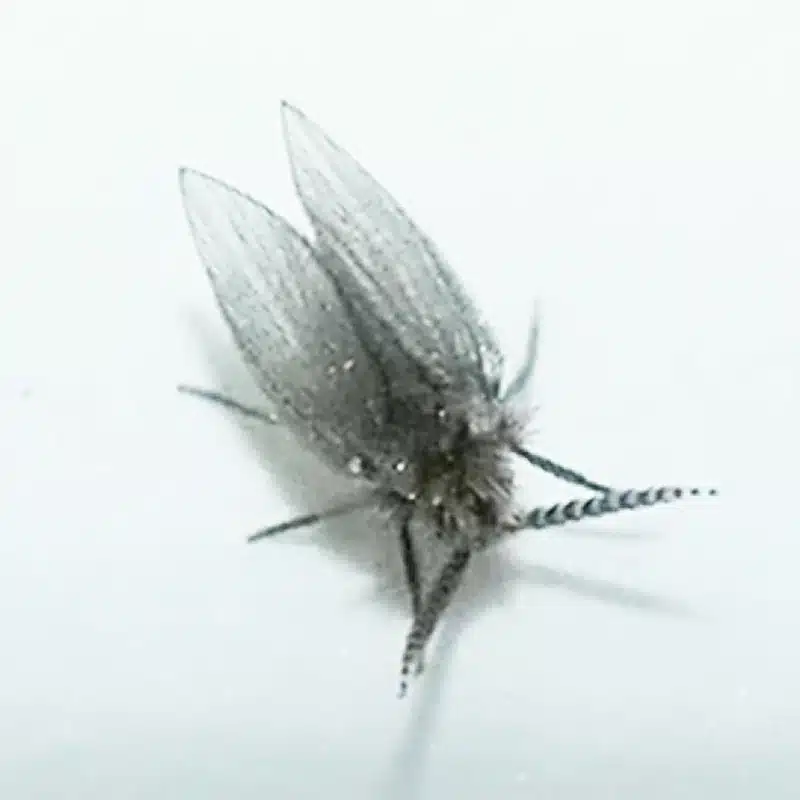When you spot tiny flies buzzing around your kitchen or bathroom, you might wonder what type of pest you’re dealing with. The difference between fruit flies and drain flies matters because getting rid of each requires completely different approaches. After four years as a registered technician in our family’s pest control business, I’ve seen countless homeowners struggle with fly infestations because they misidentified the type of fly they had.
Drain flies and fruit flies look similar at first glance, but they breed in different places and respond to different treatments. Using the wrong control method is like trying to fix a leaky pipe with duct tape—it might seem like it works initially, but the problem will keep coming back.
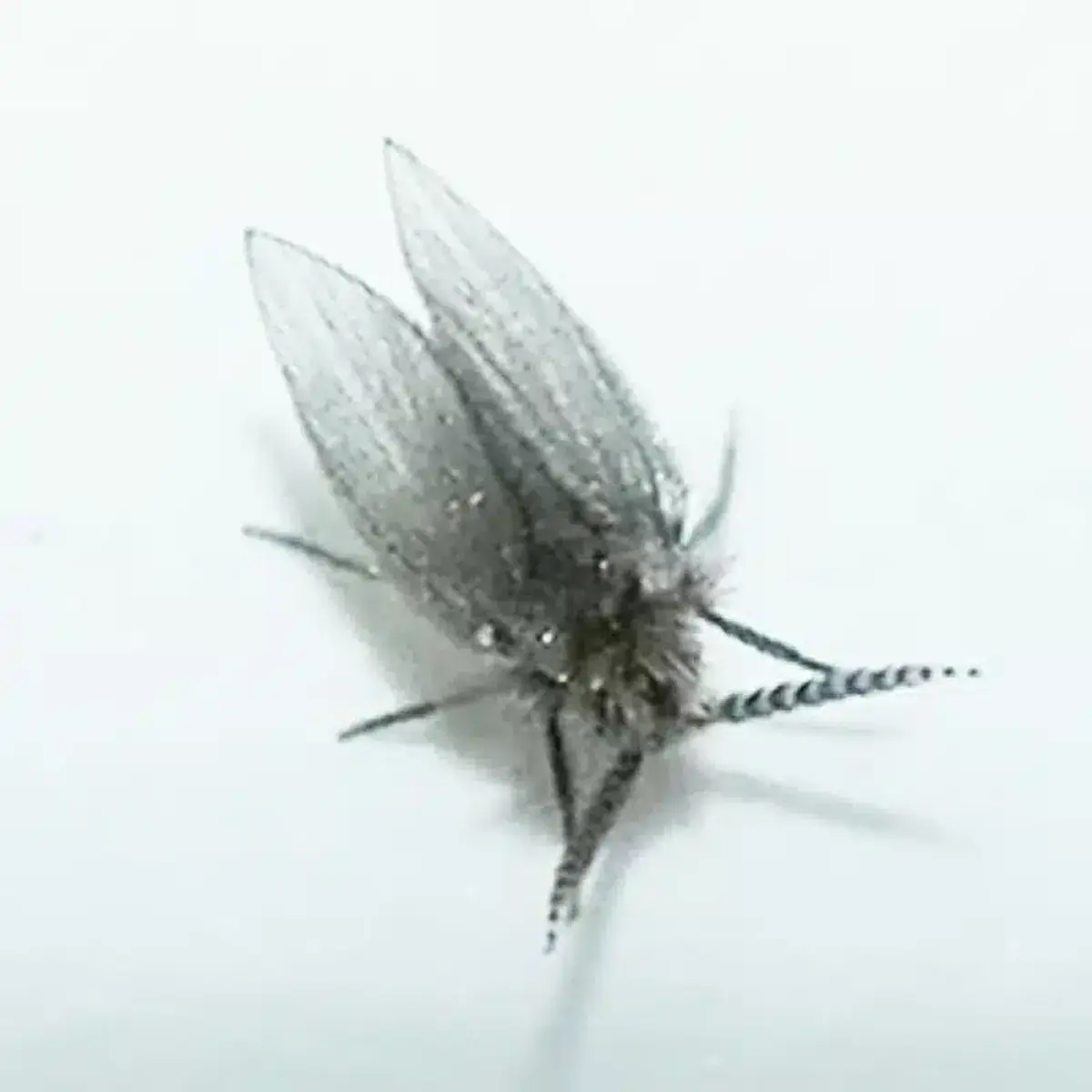
Quick Visual Identification: Drain Flies vs Fruit Flies
The easiest way to tell drain flies or fruit flies apart is by looking at their bodies and wings. Drain flies have fuzzy, moth-like bodies covered in tiny hairs that give them a gray or dark appearance. Their wings are broad and held flat against their body or in a roof-like position above their back.
Fruit flies, on the other hand, have smooth, glossy bodies with bright red eyes that are easy to spot. Their wings are clear and narrow, typically held flat against their back. According to the University of Maryland Extension, fruit flies are about ⅛ inch long, while drain flies range from 1/16 to ¼ inch.
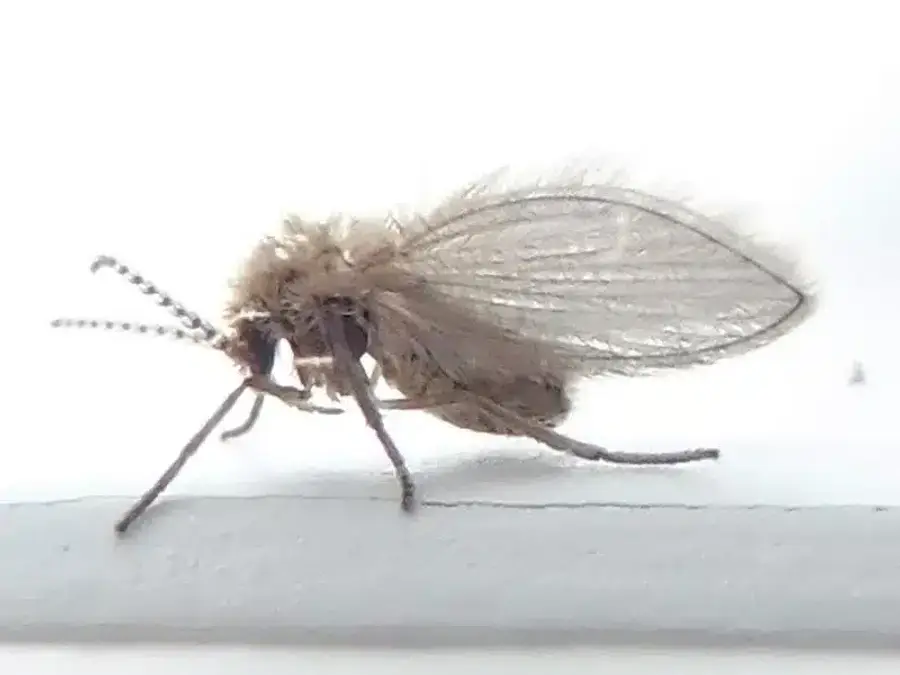
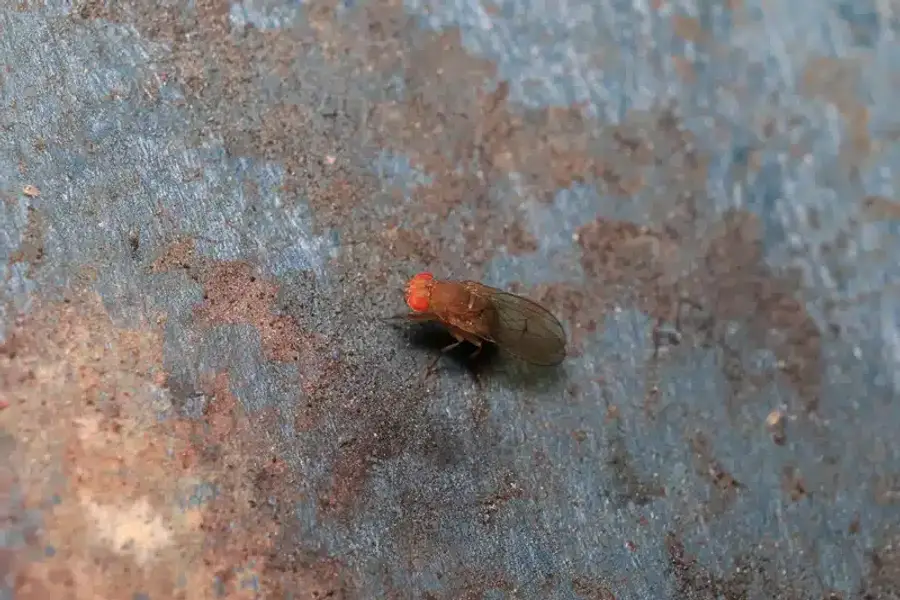
| Feature | Drain Flies | Fruit Flies |
|---|---|---|
| Body Texture | Fuzzy, moth-like | Smooth, glossy |
| Eye Color | Dark eyes | Bright red eyes |
| Size | 1/16 to ¼ inch | ⅛ inch long |
| Flight Pattern | Weak, short distances | Agile, quick darts |
| Common Areas | Sinks, drains, moisture | Kitchen, fruit bowls |
| Breeding Sites | Drain biofilm, pipes | Fermenting organic matter |
One important note: you might also encounter a dark-eyed fruit fly variety that looks darker than the common red-eyed fruit fly. Even these darker versions have smooth bodies, which helps distinguish them from the hairy drain flies.
Flight Patterns and Behavior Differences
How these flying insects move around your home provides another key identification clue. Drain flies are weak flyers that flutter short distances and often hop from surface to surface. They rarely fly more than a few feet at a time and seem to struggle against even light air currents.
Fruit flies are much more agile. They dart quickly through the air and can change direction rapidly, making them surprisingly difficult to swat.
What does the science say?
Research from the University of Washington reveals that fruit flies can reorient themselves in a single wing beat, using similar evasive tactics to fighter jets. The study found that fruit flies process visual information and execute escape maneuvers in just 5 milliseconds, making them among the most agile flying insects. This rapid response system helps explain why they’re so difficult to swat and why they seem to anticipate your movements.
Additionally, you’ll notice these pests in different areas of your home. Fruit flies tend to fly around kitchens, fruit bowls, and garbage areas. Drain flies congregate near sinks, floor drains, and anywhere moisture collects.
Where Each Type Breeds and Lays Eggs
Understanding where drain flies and fruit flies lay their eggs is crucial for effective control. This knowledge helps explain why certain areas of your home attract specific types of flying insects.
Drain Fly Breeding Sites
Drain flies breed inside the slimy biofilm that builds up in drains, pipes, and other moist areas. Drain flies are also known as sewer flies because they thrive in the organic material that accumulates in plumbing systems. Common breeding locations include:
- Sink drains and garbage disposals
- Floor drains in basements and utility rooms
- Shower and tub drains
- Condensate pans under appliances
- Septic tanks and leaking sewer lines
Drain fly larvae and pupae thrive in the microbial biofilm environment, which provides both food and protection during their development.
What does the science say?
According to NC State Extension, drain fly larvae require the specific microorganism-rich environment found in biofilms. These films contain bacteria, fungi, and organic matter that larvae feed on during their 7-28 day development cycle. The biofilm also provides physical protection from cleaning agents, which is why simple bleach treatments often fail - the protective layer prevents chemicals from reaching the larvae effectively.
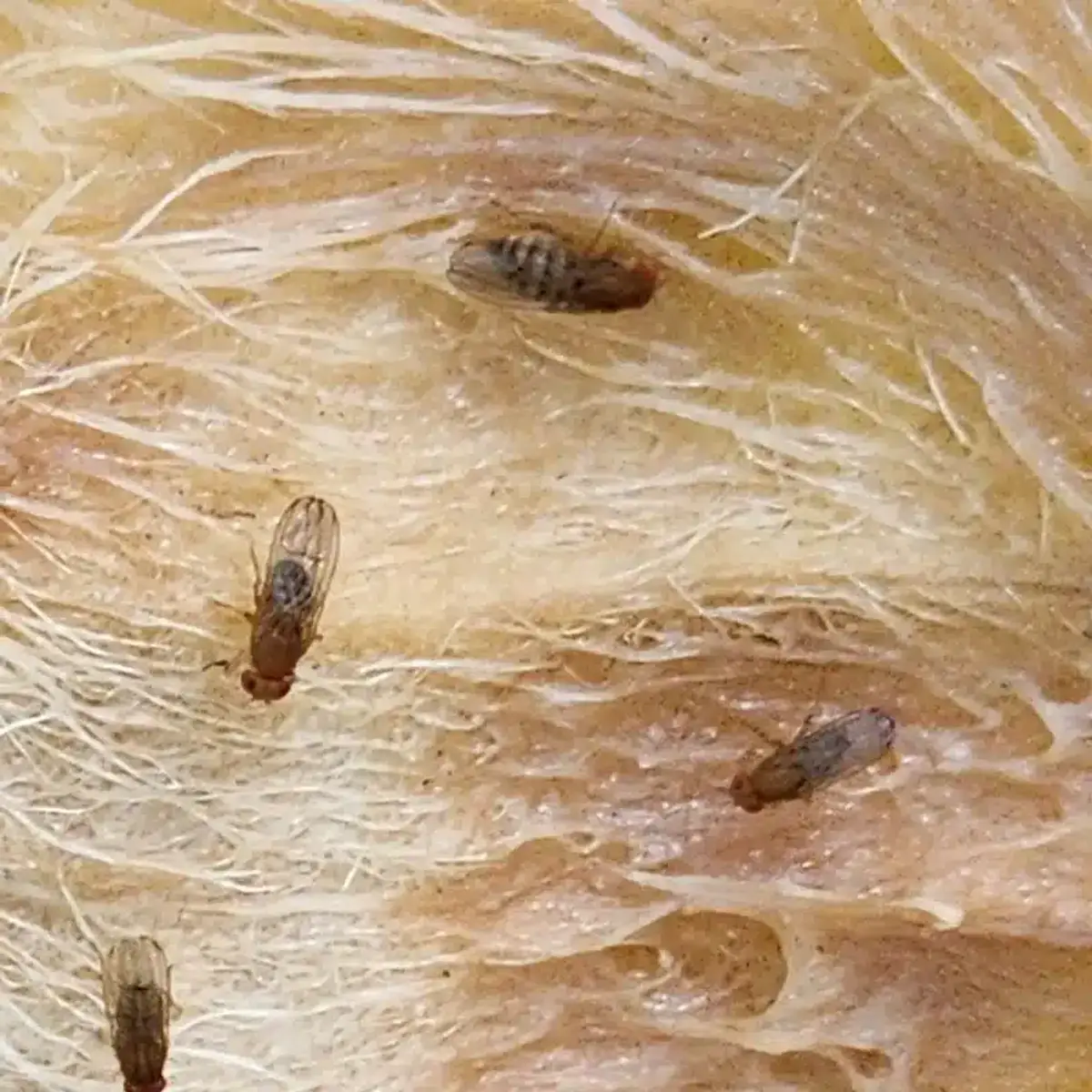
Fruit Fly Breeding Sites
Fruit flies lay eggs on the surface of fermenting organic matter. They’re attracted to the sweet, yeasty smells that come from decomposing fruit and vegetables. Typical breeding locations include:
- Overripe fruit in your fruit bowl
- Vegetables left on counters
- Spilled soda or juice under appliances
- Recycling bins with bottle residue
- Damp mops and cleaning rags
- Drain areas where food particles accumulate
Notably, fruit flies can also breed inside floor drains if food particles and organic matter collect there. This overlap sometimes confuses homeowners about which pest they’re dealing with.
Lifecycle and Development Timing
Both drain flies and fruit flies develop quickly, but their timelines differ slightly. Understanding these cycles helps explain why pest control requires sustained effort.
Fruit flies lay up to 500 eggs during their lifetime. At room temperature, fruit flies complete their entire lifecycle in just 8-10 days. The eggs hatch within 24-48 hours, larvae feed for 5-6 days, then pupate for 1-2 days before emerging as adults.
Drain flies take a bit longer, typically completing development in 7-28 days depending on temperature and conditions. However, they can have overlapping generations, which means you might see both larva and adults at the same time during a drain fly infestation.
Seasonal Patterns in the DMV Area
After serving families in the DMV for over 50 years, our family business has noticed clear seasonal patterns for both types of flies. Fruit flies may peak during late summer and early fall when local produce is abundant and indoor temperatures favor rapid reproduction.
Drain flies are generally present year-round but explode in numbers during warm, humid months from May through September. The increased moisture and temperature help microbial biofilms grow faster in drains and pipes.
Interestingly, September often brings calls about both pests simultaneously. Homeowners deal with house flies from outdoor activity, fruit flies from harvest season produce, and drain flies from summer moisture buildup—creating a perfect storm of flying insect activity.
Why Proper Identification Matters for Control
You need to know what kind of pest you’re dealing with before choosing a treatment approach. Using fruit fly methods against drain flies—or vice versa—wastes time and money while allowing the infestation to grow.
For example, vinegar traps work excellently for fruit flies because they’re attracted to fermentation odors. However, these same traps are useless against drain flies, which seek out bacterial biofilms rather than sweet fermentation.
Similarly, pouring drain cleaner down pipes helps eliminate drain fly breeding sites but won’t touch fruit flies breeding on your countertop banana. Each type of fly problem requires targeted solutions that address where the pest actually breeds and develops.
Getting Rid of Drain Flies
Getting rid of drain flies starts with eliminating their breeding habitat. Since drain flies breed in the slimy biofilm inside pipes, you must physically remove this material to break their reproductive cycle.
Step 1: How to ID Drain Flies and Locate Breeding Sites
First, id drain flies by locating their breeding source. Place tape over suspect drains overnight—if drain flies are breeding there, adults will stick to the tape as they emerge. Check all drains, including the sink drain, floor drains, and any drain or garbage disposal areas.
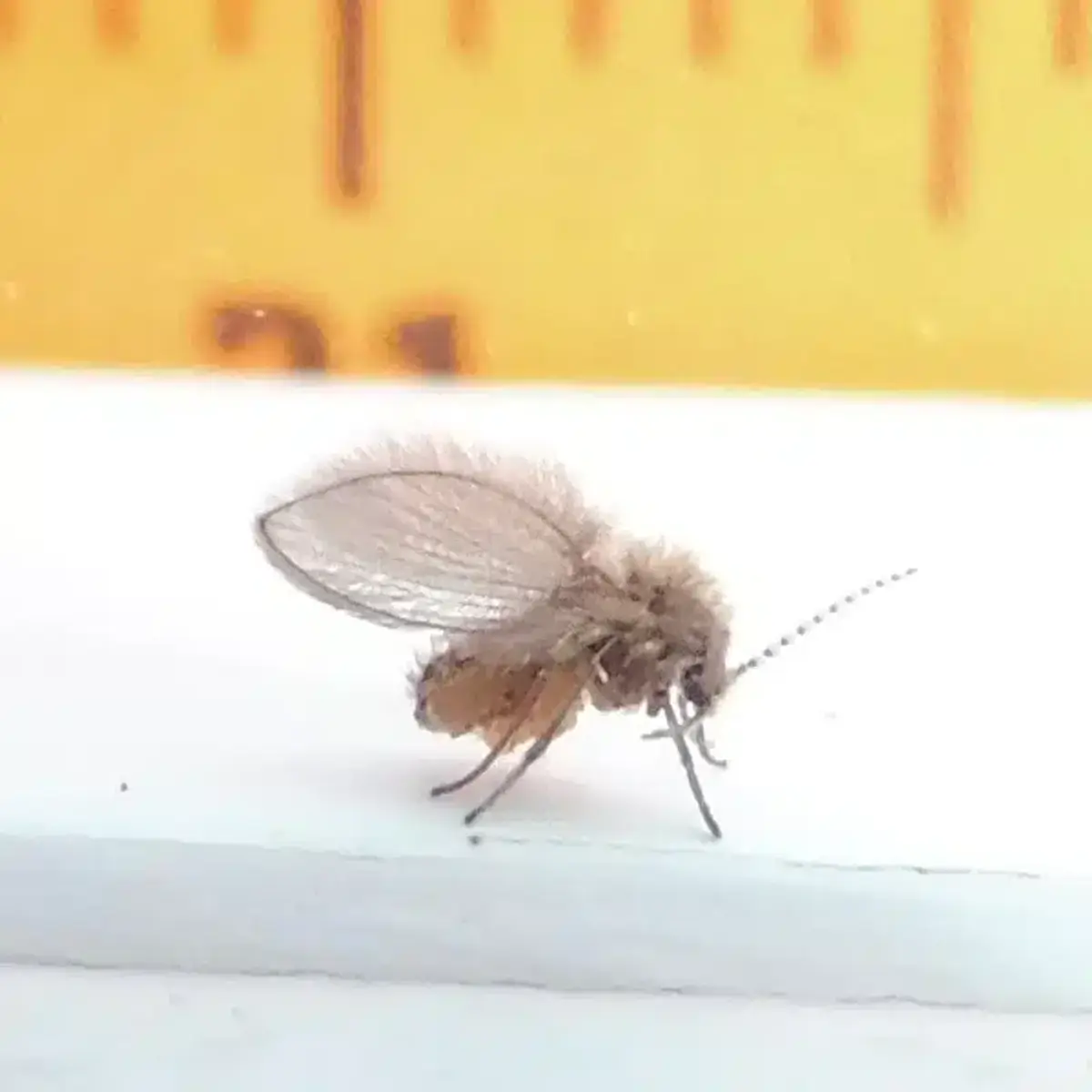
Step 2: Clean the Breeding Sites
Use a stiff brush or drain snake to physically scrub the biofilm from pipe walls. Follow this with boiling water to flush away loosened material. Avoid bleach or harsh acids, which can’t penetrate the protective biofilm and may damage your plumbing.
For ongoing drain cleaning, consider bio-enzymatic foams that digest organic buildup without harming pipes. These products work slowly but address the root cause of the problem.
Step 3: Address Moisture Issues
Keep drain flies away by fixing leaks, ensuring proper drainage, and reducing humidity where possible. Dry mop buckets thoroughly after use, and make sure condensate lines from appliances drain properly.
Step 4: Monitor Results
Get rid of drain flies completely by monitoring for several weeks after treatment. Adult drain flies live about two weeks, so you should see activity decrease significantly within that timeframe if you’ve eliminated their breeding sites.
Getting Rid of Fruit Flies
Dealing with fruit flies requires a different approach focused on sanitation and elimination of fermenting materials. Since fruit flies love sweet, decomposing organic matter, removing these attractants is your primary goal.
Step 1: Remove Breeding Sources to Prevent Fruit Flies
Prevent fruit flies by storing ripe produce in the refrigerator and disposing of overripe items immediately. Check hidden areas where fruit that has been left might be decomposing, such as behind appliances or in pantry corners.
Fruit flies don’t just target obvious sources. Clean up spilled soda, wipe down recycling bins, and inspect areas around your garbage for sticky residue that might attract these pests.
Step 2: Use Targeted Traps
Fruit fly traps work by exploiting their attraction to fermentation odors. Mix apple cider vinegar with a drop of dish soap in a small jar. The vinegar attracts fruit flies while the soap breaks surface tension, causing them to drown.
Change traps every 48 hours for maximum effectiveness. During peak activity, you might need multiple traps around fruit bowls and other attractive areas.
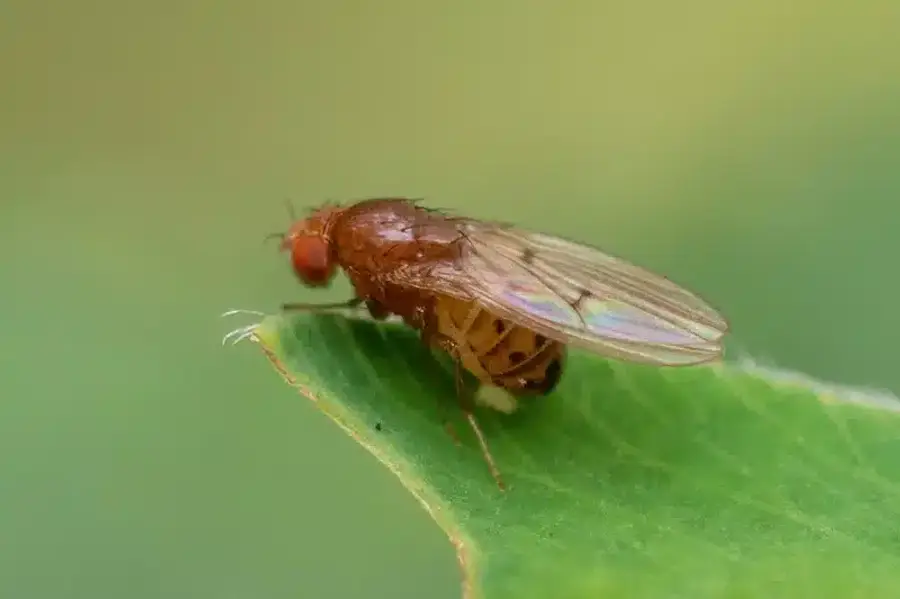

Step 3: Deep Clean Hidden Areas
Get rid of fruit flies by cleaning areas where organic material might accumulate unnoticed. This includes wiping down the inside of garbage cans, cleaning under appliances, and scrubbing areas where sticky substances might have spilled.
Pay special attention to areas where fruit flies tend to congregate. Even small amounts of fermenting material can sustain a population and keep your fruit fly problem going.
Step 4: Maintain Prevention
Long-term fruit fly infestation prevention requires consistent sanitation habits. Rinse recyclables before storing them, keep fruit refrigerated when possible, and address spills immediately.
Common Misidentification: Fungus Gnats vs These Flies
Sometimes homeowners confuse flies and fungus gnats with drain flies or fruit flies. Fungus gnat identification becomes important because these pests also thrive in moist environments but require different control approaches.
Fungus gnats will be spotted flying around potted plants, where fungus gnat larva and pupa develop in damp potting soil. Unlike drain flies, fungus gnats have clear wings without the hairy fringe, and they don’t congregate around drains.
To get rid of gnats that turn out to be fungus gnats, you’ll need to address soil moisture in houseplants rather than drain cleaning or fruit removal. This demonstrates why proper identification matters—each pest requires its own targeted approach.
When to Call Professional Pest Control
While many homeowners can handle minor fruit fly or drain fly issues, persistent problems often require professional intervention. If you’ve tried multiple approaches for several weeks without success, there might be hidden breeding sites you haven’t discovered.
Professional pest control technicians have experience identifying all potential breeding locations and access to specialized tools for treating hard-to-reach areas. Additionally, severe infestations might indicate underlying moisture or sanitation issues that need professional attention.
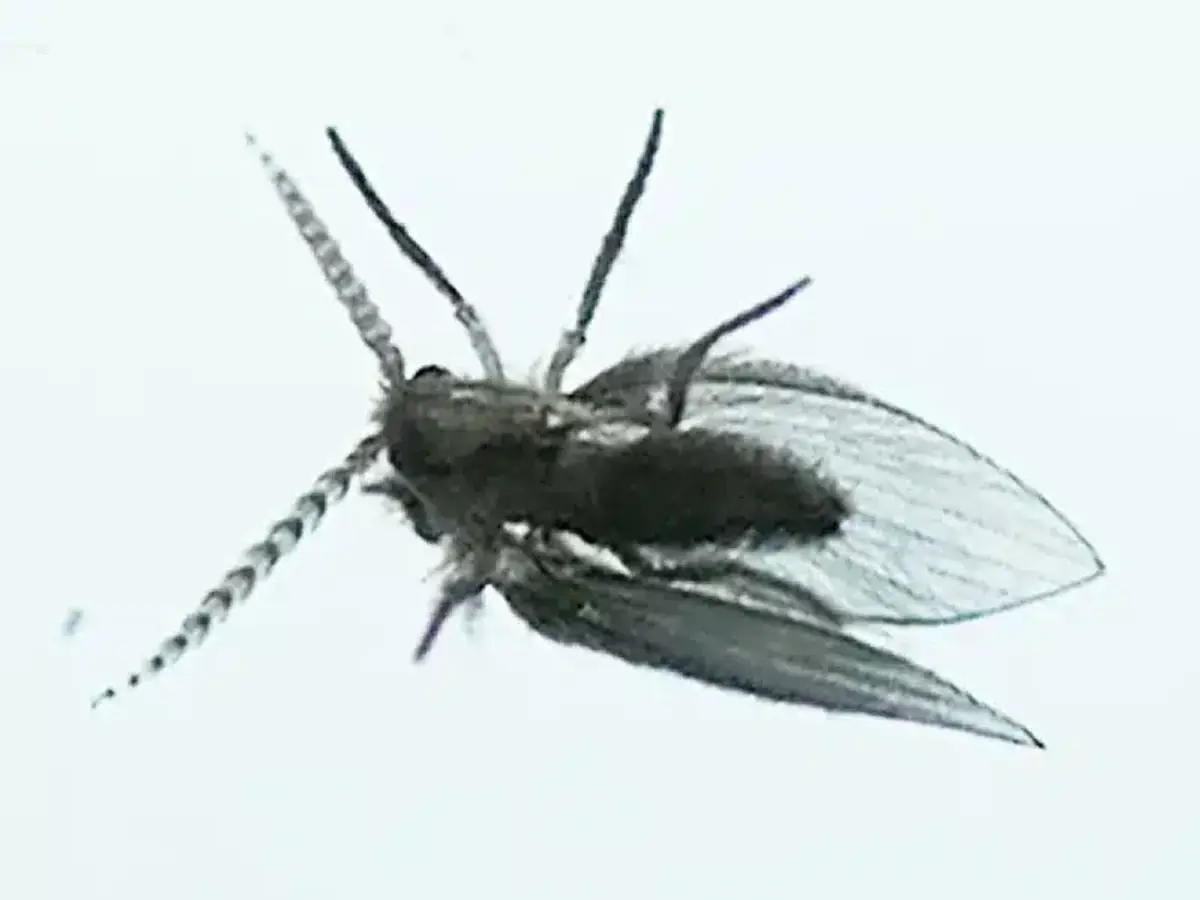
How to Prevent Drain Flies and Fruit Flies
Prevent drain fly and fruit fly problems by maintaining good sanitation and moisture control throughout your home. Regular cleaning of drains, prompt disposal of overripe produce, and fixing moisture issues create an environment that’s less attractive to both pests.
For drain flies specifically, prevent drain fly breeding by running water down infrequently used drains weekly and cleaning drain covers regularly. Pour boiling water down the drain occasionally to help prevent biofilm buildup.
For fruit flies, the key is to keep ripening produce refrigerated when possible and clean up sweet spills immediately. Even small amounts of residue can attract these persistent pests and support population growth.
Essential Prevention Steps
- Weekly Drain Maintenance: Run hot water down infrequently used drains and clean drain covers to prevent biofilm buildup
- Moisture Control: Fix leaks promptly and ensure proper ventilation in bathrooms and kitchens
- Food Storage: Store ripe produce in refrigerator and rinse recyclables before storing
- Regular Cleaning: Wipe down surfaces immediately after spills and clean under appliances monthly
- Garbage Management: Empty trash frequently and keep lids tightly sealed
Breaking the Infestation Cycle for Long-Term Control
Successfully eliminating any fly infestation in your home requires understanding and interrupting the pest’s reproductive cycle. Both drain flies and fruit flies reproduce quickly, so you might continue seeing adults for 1-2 weeks after eliminating breeding sites.
This is normal and doesn’t mean your efforts aren’t working. Continue your control measures consistently during this period to ensure you get rid of them for good. Any surviving adults that can’t find suitable breeding sites will die off naturally.
The key is persistence and thoroughness. Missing even small breeding sites can allow populations to rebound quickly, especially during warm weather when development cycles accelerate.
Health and Nuisance Concerns
While neither drain flies nor fruit flies bite humans, both can pose indirect health concerns. These common flying insects can carry bacteria on their bodies and potentially contaminate food preparation surfaces.
Heavy infestations can also create allergen concerns, particularly with drain flies whose body parts can become airborne and trigger respiratory sensitivities in some people. Beyond health issues, both pests create significant nuisance problems that can make kitchens and bathrooms unpleasant to use.
Maintaining control of these populations protects both your comfort and your family’s health by reducing potential contamination risks and eliminating the stress of dealing with persistent flying insects in your living spaces.
Understanding the differences between drain flies and fruit flies gives you the power to choose the right control approach from the start. Whether you’re dealing with fuzzy moth-like drain flies emerging from pipes or red-eyed fruit flies hovering around your produce, targeted treatment based on proper identification gets results faster and more effectively than trial-and-error methods.
If you’re struggling with persistent flying insects in your home or need help identifying what type of pest you are dealing with, don’t hesitate to reach out for professional guidance. Call us at 703-683-2000 or email info@bettertermite.com for expert identification and treatment recommendations tailored to your specific situation.
Frequently Asked Questions
What's the quickest way to tell drain flies and fruit flies apart?
+
Look at their body texture and eye color. Drain flies have fuzzy, moth-like bodies with dark eyes, while fruit flies have smooth, glossy bodies with bright red eyes. Drain flies also flutter weakly and hop from surface to surface, while fruit flies dart quickly through the air.
Why do vinegar traps work for fruit flies but not drain flies?
+
Fruit flies are attracted to fermentation odors like those found in vinegar, which mimics their preferred breeding environment of rotting fruit. Drain flies seek out bacterial biofilms found in pipes rather than sweet fermentation, so vinegar traps don't appeal to them at all.
Can drain flies and fruit flies breed in the same locations?
+
Yes, there is some overlap. While drain flies prefer the slimy biofilm inside pipes and fruit flies prefer fermenting organic matter, both can breed in floor drains where food particles accumulate. This overlap sometimes confuses homeowners about which pest they're dealing with.
How long does it take to get rid of a drain fly infestation?
+
After eliminating breeding sites, adult drain flies will die off within about two weeks since that's their typical lifespan. However, you should continue monitoring and cleaning for several weeks to ensure you've addressed all breeding locations and interrupted their reproductive cycle completely.
Are drain flies or fruit flies dangerous to my health?
+
Neither drain flies nor fruit flies bite humans, but both can pose indirect health concerns. They can carry bacteria on their bodies and potentially contaminate food preparation surfaces. Heavy drain fly infestations can also create allergen concerns as their body parts can become airborne and trigger respiratory sensitivities.
When is the best time of year to treat for these flies in the DMV area?
+
Drain flies are present year-round but explode in numbers during warm, humid months from May through September. Fruit flies peak during late summer and early fall when produce is abundant. September often brings problems with both pests simultaneously due to harvest season and summer moisture buildup.
With five years of hands-on experience in the pest control industry, George Schulz is a registered technician with the Virginia Pest Management Association and a proud third-generation professional in a family business that’s been protecting homes for over 57 years. He manages and trains a team of service pros while also leading internal research efforts—recently spearheading a deep-dive review of thousands of documents on pest control materials to hand-pick the most kid and pet friendly, most effective solutions tailored specifically for homes in the DC metro area.
